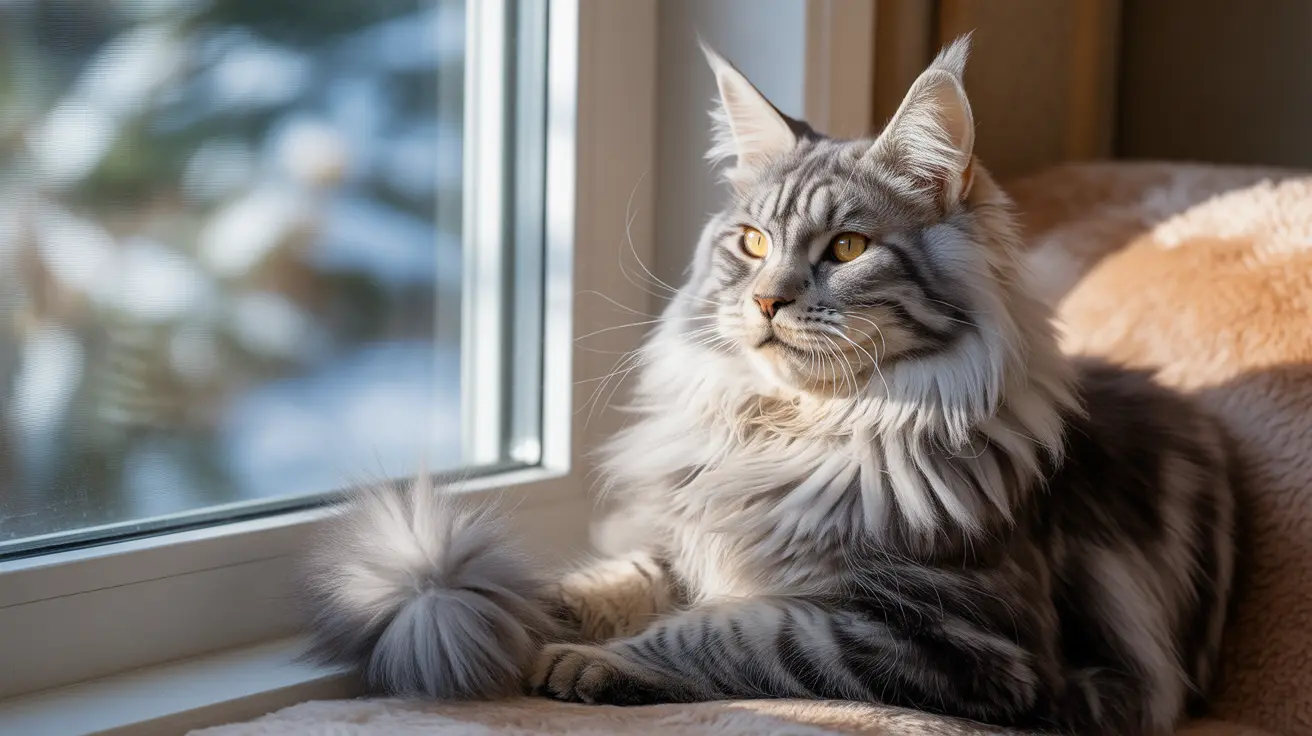The Science Behind Winter Coat Development
The development of a winter coat in cats is primarily triggered by changes in daylight hours, not temperature. This process, known as photoperiodism, affects cats' hormone production, specifically melatonin, which influences fur growth and shedding cycles.
Even indoor cats respond to these natural light changes through windows, though their coat changes may be less dramatic than their outdoor counterparts. The process typically begins in fall as days grow shorter, prompting the growth of a thicker, more insulating undercoat.
How Indoor Cats' Winter Coats Differ
Indoor cats do develop winter coats, but their experience differs from outdoor cats in several ways:
- Less dramatic coat thickening due to controlled indoor temperatures
- More gradual seasonal transitions
- Potential variations in timing due to artificial lighting
- Subtler changes in undercoat density
Managing Your Indoor Cat's Seasonal Coat
During winter months, indoor cats require special attention to maintain their changing coats:
- Regular brushing to remove loose fur
- Monitoring for matting, especially in long-haired breeds
- Providing proper nutrition to support healthy coat development
- Creating warm, comfortable resting spaces
The Role of Breed and Genetics
Different cat breeds experience varying degrees of winter coat development. Long-haired breeds like Maine Coons and Persian cats typically develop more pronounced winter coats, while short-haired breeds show more subtle changes. Understanding your cat's breed characteristics can help you anticipate and prepare for seasonal changes.
Environmental Factors and Indoor Cats
Several environmental factors influence how indoor cats develop their winter coats:
- Exposure to natural light through windows
- Indoor temperature fluctuations
- Artificial lighting schedules
- Home humidity levels
Frequently Asked Questions
Do indoor cats grow winter coats even if they live mostly under artificial lighting?
Yes, indoor cats do grow winter coats, though the change may be less pronounced. Even artificial lighting doesn't completely override their natural biological response to seasonal changes in daylight.
How does the change in daylight, not temperature, affect a cat's winter fur growth?
Decreasing daylight triggers hormonal changes in cats that stimulate winter coat growth, regardless of temperature. This evolutionary mechanism responds primarily to photoperiod rather than environmental temperature.
What are the best grooming practices to care for my cat's thicker winter coat indoors?
Regular brushing (2-3 times weekly), using appropriate grooming tools for your cat's coat type, and monitoring for matting are essential. Avoid over-bathing, which can strip natural oils.
Why do some cat breeds develop thicker winter coats while others show less change?
Breed genetics play a significant role in winter coat development. Breeds originating from colder climates typically develop thicker winter coats compared to breeds from warmer regions.
How can I help keep my indoor cat warm and comfortable during winter despite indoor heating?
Provide warm bedding in draft-free areas, maintain consistent indoor temperatures, and ensure access to sunny spots. Consider providing heated beds or blankets for elderly or thin-coated cats.
Conclusion
Indoor cats do indeed get winter coats, though the change may be subtler than in outdoor cats. This natural process, triggered by daylight changes, continues to function even in our modern, climate-controlled homes. Understanding this seasonal change helps cat owners provide better care and support their feline friends' natural biological rhythms throughout the year.






